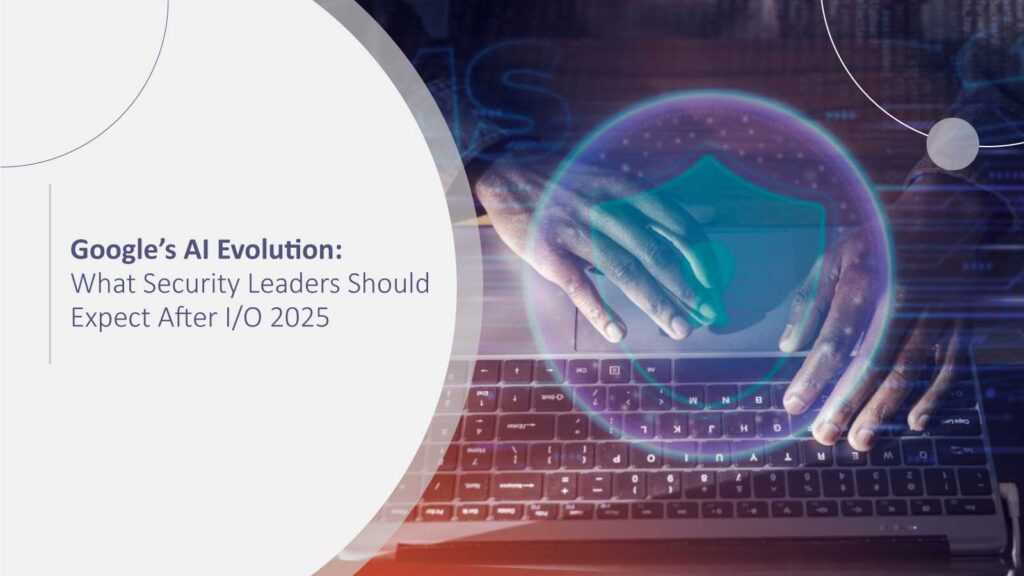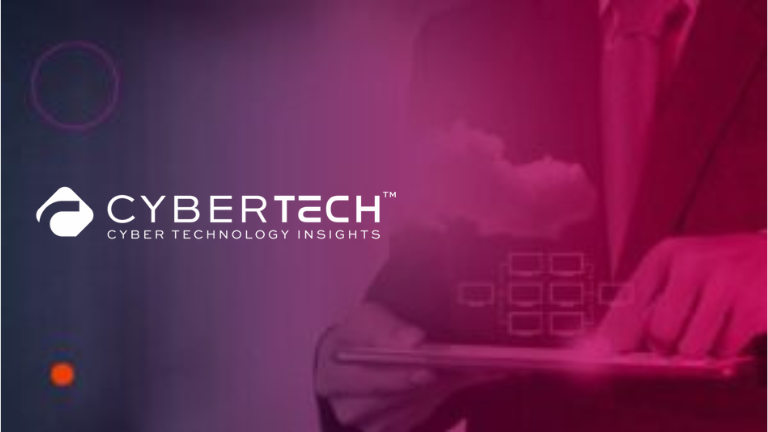The tech world is buzzing with Google’s I/O 2025 keynote, in which the company introduced revolutionary developments in artificial intelligence. From the debut of AI Mode within Search to Gemini 2.5 and Project Astra, Google is taking AI further into its product portfolio and, consequently, into our worlds. What do these developments mean for cybersecurity leaders, CISOs, CIOs, and IT security professionals who are charged with protecting enterprises?
As the AI presence expands, security challenges and threats that accompany it expand too. This piece addresses the biggest implications of Google’s latest AI developments and offers suggestions on how security teams must prepare for an AI-enabled as well as a risk-filled world.
Understanding Google’s AI Evolution at Google I/O 2025
At Google I/O 2025, the company introduced a new generation of AI products that aren’t experimental but designed for easy integration into day-to-day workflows. These products represent a departure from AI as a research project to AI as a tool of operation. With that, however, comes a new challenge for cybersecurity leaders.
- Gemini 2.5: A newer, more sophisticated AI model based on Google I/O 2025 that provides more reasoning, coding, and multitasking.
- Project Astra: A general-purpose AI assistant that performs complex, multi-step actions on behalf of users.
- Project Mariner: Built to perform several web-based actions at once, streamlining workflow but potentially adding complexity.
- AI Mode in Search: Views Google Search as an artificial human-like conversation assistant that learns and mimics a master’s behavior.
- Generative Media Tools: New AI tools for generating media content, expanding creative capabilities, but also inspiring abuse concerns.
- Google Beam: An AI-driven 3D video collaboration platform to make virtual meetings and teamwork smarter.
In a word, Google’s advanced AI provides opportunity and imperative. For cybersecurity leaders, the time is now to imbue technology with governance, redefine risk models, and also lead forward to create the future of intelligent digital operations.

New Cybersecurity Threats from Google’s AI Advances
While no one doubts the worth of AI, Google’s new additions with Google I/O 2025 also introduce new surfaces of attack and new security issues. Identity and Access Threats with AI Personalization and Project Astra
AI assistants such as Project Astra will possess unprecedented freedom to access enterprise and user data. With the ability to perform sophisticated tasks on behalf of users, it will be possible that if an AI is hijacked, it could masquerade as users or elevate privileges undetected.
Extremely customized AI experiences also threaten to create new attack surfaces. Attackers might leverage implicit weaknesses in AI personalization as a platform for executing advanced social engineering or insider attacks.
Additional Attack Surfaces Through AI-Automated Web Activity (Project Mariner)
One of the Most Important parts of Google I/O 2025 is Project Mariner. Its web-based workflows are automated by carrying out multiple tasks simultaneously. As much as it creates increased productivity, it leads to new security vulnerabilities. Automated flows that communicate with multiple web services can unintentionally leak sensitive information or start unauthorized actions during an attack. Attackers could use vulnerabilities in automated workflows to embed malicious commands, which eventually would make detection and response difficult for threats.
Risk of AI-Based Phishing, Deepfakes, and Disinformation after Google I/O 2025
Google’s media generation abilities make it possible to generate realistic images, video, and audio content. While beneficial to fantasy, the features make it possible for cybercriminals to generate successful phishing or deepfakes, eroding confidence in communication.
Security professionals will need to be prepared to identify and eliminate the effects of AI-based disinformation campaigns, which could have an effect on employees or customers.
Security Concerns in AI-Fueled Communication Platforms such as Google Beam
Google Beam’s AI-facilitated 3D communication makes virtual teamwork better but can potentially attract privacy and security threats. AI can theoretically decrypt and infer confidential information from video communications, raising the risk of leakage or spying.
Secure encryption, access controls, and data protection will be of paramount concern as AI communications gain mainstream acceptance.
Prepping Your Security Team for AI-Powered Innovation
In order to stay ahead in AI security, it is important to prepare and transform the organization well in advance.
Creating AI Literacy Among Security Teams
Security professionals need foundational knowledge of AI to be able to educate themselves on growing threats and collaborate effectively with AI developers. On top of that, Regular training and upskilling programs on AI fundamentals and also vulnerabilities will give teams the confidence to manage AI threats.
Utilizing AI Researchers and Product Teams for Proactive Defense
Security teams need to establish tight partnerships with AI developers and similarly research communities. Sharing threat intelligence and vulnerability information beforehand can prevent costly breaches. Preemptive collaboration guarantees security is embedded in AI innovations, not tacked on at deployment.
Using AI-Powered Security Tools to Respond to Emerging Threats
AI is not just a problem, but also the solution. Advanced threat defense, anomaly detection, and response systems supported by AI can help security teams keep pace with advanced attack methods. Hence, investment in AI-driven cybersecurity solutions will be necessary to support an efficient defense posture.
Regulatory and Compliance Issues with Evolving AI Technology
With the technologies of AI changing so rapidly, data protection rules, AI ethics, and security controls also change in turn. Security leaders must remain in pace with changing regulations and ensure that their AI systems adhere to new models like the EU AI Act or the U.S. AI governance efforts.
How to Adapt Your Security Strategy for This AI-Driven World
It’s easy to get daunted, but the good news is that a lot of what already works in security concepts can still be applied; it’s just a matter of expanding it to cover AI.
Step 1: Expand Your Threat Model to Include AI-Specific Threats
Talk to your security and AI personnel. Map the integration of AI across your processes and where threats can emerge. Include model manipulation, poisoned training data, and AI agent impersonation there. This sets the stage for all the other defenses.
Step 2: Reinforce Zero Trust with AI-Aware Controls
Zero Trust is more important than ever. AI systems acting on behalf of users should have the least privilege necessary, with continuous verification. Implement strict role-based permissions specifically for AI agents and automate logging of their actions. This way, if an AI behaves unexpectedly, you’ll spot it fast.
Step 3: Use AI to Fight AI, Invest in Detection and Response
AI-powered detection tools can detect anomalies that humans cannot. They can scan huge volumes of data within a short period to determine if the content was generated by AI or whether there are suspicious automated processes. Integrate these tools into your SOC to increase your rate of response.
Step 4: Train Your Personnel on AI-Driven Threats
Your end users are your first line of defense. Regularly update training programs to counter new AI attack vectors. Simulate phishing using AI-generated messages so end users learn how to identify advanced phishing attacks.
Step 5: Engage Security and AI Teams to Collaborate
AI development teams hold priceless insights into how models work and their vulnerabilities. Establish a collaboration where security can audit AI systems, review new features, and collaborate to develop mitigation tactics. This joint process will get your defenses in sync with evolving AI capabilities.
Google’s AI advancements revealed at I/O 2025 are a massive leap forward, weaving AI even deeper into our online lives. For cybersecurity leaders, it brings a double-edged sword of exciting productivity and innovation potential, but also a new threat landscape. CISOs, CIOs, and their security teams must act now to incorporate AI risk assessments, update security architectures, and develop AI literacy across their companies. Staying educated, operating in multidisciplinary teams, and embracing adaptive security models will be essential to living the AI-driven future safely.
FAQs
1. How can security teams prevent misuse of AI assistants like Project Astra?
By setting strict access controls, monitoring AI activity, and limiting the permissions these assistants have within enterprise systems.
2. Could AI-generated media really make phishing more believable?
Yes. Attackers can now create highly convincing fake emails, videos, or voices that are harder for users to detect.
3. What role should security teams play during AI product development?
They should collaborate early with AI developers to identify risks, review features, and build security into the design process.
4. Are automated workflows like those in Project Mariner vulnerable to hidden threats?
Yes. Malicious commands can be hidden inside automated actions, making them hard to spot without proper safeguards.
5. What’s the first step to adapt our security strategy for AI?
Start by expanding your threat model to include AI-specific risks like model tampering, data poisoning, or impersonation.



